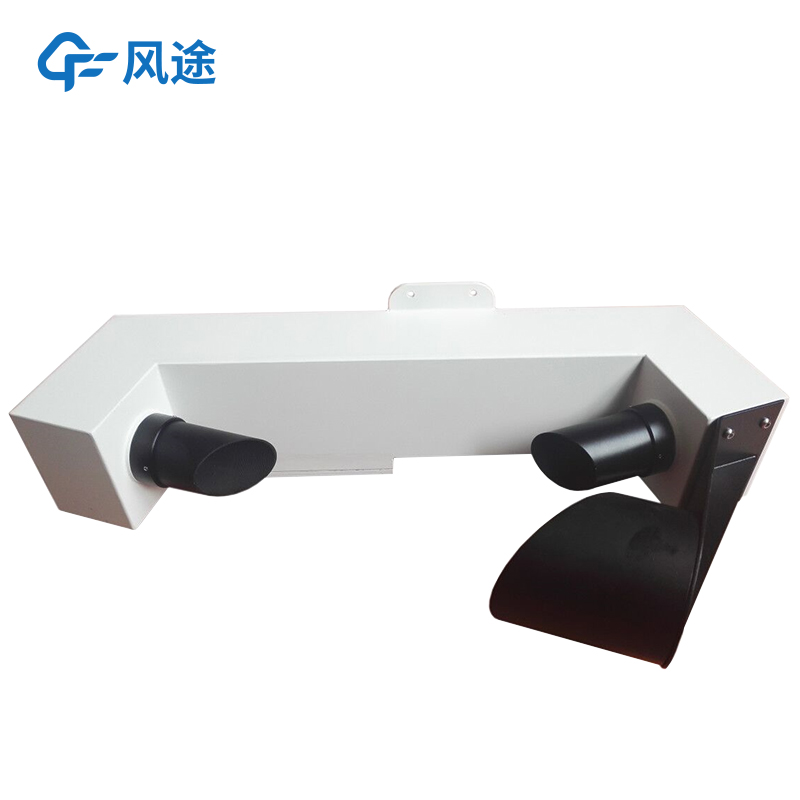Shandong Fengtu IOT Technology Co., Ltd
Sales Manager:Ms. Emily Wang
Cel,Whatsapp,Wechat:+86 15898932201
Email:info@fengtutec.com
Add:No. 155 Optoelectronic Industry Accelerator, Gaoxin District, Weifang, Shandong, China

Sales Manager:Ms. Emily Wang
Cel,Whatsapp,Wechat:+86 15898932201
Email:info@fengtutec.com
Add:No. 155 Optoelectronic Industry Accelerator, Gaoxin District, Weifang, Shandong, China
time:2025-09-26 09:57:27 source:Weather Station viewed:180 time
Road Weather Sensors are automated ground-based meteorological observation devices. They emit electromagnetic waves in specific bands (such as laser or infrared light) or utilize optical imaging technology to detect the characteristics of atmospheric particles like precipitation, fog droplets, and dust. This enables them to automatically identify ongoing weather phenomena (such as rain, snow, hail, fog, haze, and sandstorms) and measure parameters like intensity and visibility.
The forward-scatter type is the most common. The instrument's transmitter emits a beam of infrared light, and the receiver is not directly opposite but positioned at a forward angle (typically 30°-45°) relative to the transmitter. When particles (raindrops, snowflakes, fog droplets, dust) are present in the air, the infrared light undergoes forward scattering. By measuring the intensity of the scattered light, the receiver can calculate the atmospheric extinction coefficient and subsequently determine the Meteorological Optical Range (MOR), i.e., visibility. By analyzing the unique fluctuation patterns of the scattered signals (such as differences in signal frequency and intensity between raindrops and snowflakes), it can distinguish between types of precipitation.
This type of equipment has a relatively simple structure and moderate cost, making it a standard feature at weather stations and airports. It effectively differentiates between rain, snow, fog, and other conditions.
The FT-N20 Road Weather Sensors, equipped with an optional weather phenomenon detection module, can automatically identify various weather conditions.
Precipitation Types: Can distinguish between drizzle, light rain, moderate rain, and heavy rain.
Precipitation Phases: Can identify rain, snow, and mixed precipitation.
Fog/Smoke: Can detect conditions such as light fog/smoke and dense fog/smoke.
Clear Sky: Can accurately determine clear weather with no precipitation.
This identification capability provides not just single data points but a qualitative description of weather conditions, with an identification rate exceeding 95%.

Agrometeorological stations are small automatic weather stations deployed in farmlands, orchards, greenhouses and other areas. They automatically monitor climate and environmental factors closely related to agricultural production activities, helping farmers and researchers grasp field environmental...
The Portable Weather Station is an important tool for modern environmental monitoring. It can simultaneously monitor parameters such as temperature, humidity, wind speed, wind direction, air pressure, illumination, PM2.5, PM10, noise, and rainfall. It adopts an ultrasonic wind speed and direction se...
The Fengtu Small Automatic Weather Station simultaneously conducts real-time monitoring of six core meteorological parameters: wind speed, wind direction, temperature, humidity, air pressure, and optical rainfall. The wind speed and direction sensors have a range of 0 to 60 m/s, with an accuracy of...
The Portable Weather Station is a high-precision comprehensive ground observation device with mobile characteristics. It is portable, quick to install, and boasts high observation accuracy, thus being widely used in the field of meteorological monitoring.This device can accurately measure multiple b...